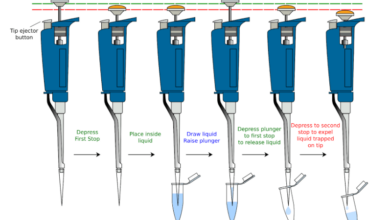Unveiling the Art of Index Swing Trading: Mastering Short-Term Market Trends

In the fast-paced world of finance, where market sentiments can shift in the blink of an eye, mastering the art of index swing trading is a skill that can prove invaluable. This article delves deep into the nuances of index swing trading techniques, focusing on capturing short-term market trends for optimal returns.
Understanding Market Trends
Before delving into the intricacies of swing trading, it’s crucial to grasp the essence of market trends. Short-term trends in index markets can be identified through a combination of fundamental and technical analysis, along with an understanding of market sentiment indicators.
While fundamental analysis focuses on evaluating the intrinsic value of securities based on economic and financial factors, technical analysis involves analyzing past market data, primarily price and volume, to forecast future price movements. In swing trading, technical analysis plays a pivotal role in identifying short-term trends and potential trading opportunities.
Market sentiment indicators, such as investor sentiment surveys, put/call ratios, and volatility indices, provide valuable insights into the overall mood of the market. By gauging market sentiment, traders can anticipate potential shifts in direction and adjust their trading strategies accordingly. You can explore the latest trends and analysis on the UK 100 price movements for further insights into swing trading strategies.
Read also Unveiling the Art of Surveillance: A Guide to Effective Investigation Techniques
Essential Tools for Index Swing Trading
Several technical indicators are widely used by swing traders to identify short-term trends in index markets. Moving averages, such as the simple moving average (SMA) and exponential moving average (EMA), help smooth out price data and identify trend direction. The Relative Strength Index (RSI) and Moving Average Convergence Divergence (MACD) are oscillators that measure the strength and momentum of price movements, respectively.
Chart patterns, such as head and shoulders, double tops and bottoms, and flags and pennants, provide visual representations of market sentiment and potential trend reversals. Candlestick patterns, such as engulfing patterns and doji formations, offer insights into market psychology and can signal potential trend continuation or reversal.
Effective risk management is paramount in swing trading to protect capital and preserve profits. Setting stop-loss and take-profit levels based on predefined risk-reward ratios is essential to limit losses and maximize gains. Position sizing techniques, such as the fixed dollar amount or percentage of the equity method, help ensure consistency in risk exposure across trades.
Developing a Swing Trading Strategy
The choice of timeframe is crucial in swing trading, as it determines the duration of trades and the frequency of market analysis. Commonly used timeframes for swing trading include the daily, 4-hour, and 1-hour charts, although traders may opt for shorter or longer timeframes based on their trading preferences and risk tolerance.
Swing traders employ various entry and exit strategies to capitalize on short-term market trends. Breakout strategies involve entering trades when the price breaks above or below critical support or resistance levels, signaling a potential trend continuation. Pullback strategies, on the other hand, entail entering trades on retracements within an existing trend, aiming to capture favorable entry points with reduced risk.
To increase the probability of successful trades, swing traders often use confirmation signals and filter criteria to validate trading setups. Volume analysis, for instance, can confirm the strength of a price move, with increasing volume supporting bullish or bearish momentum. Multiple timeframe analysis involves cross-referencing signals from different timeframes to confirm trend direction and filter out false signals.
Advanced Techniques for Enhanced Performance
Options strategies, such as buying call or put options or employing option spreads, can complement swing trading strategies by providing additional flexibility and risk management capabilities. Options allow traders to profit from directional price movements, hedge against adverse market conditions and capitalize on volatility fluctuations.
Algorithmic trading, or algo trading, involves using computer algorithms to execute trades automatically based on predefined criteria and rules. Algo trading can help eliminate human emotion from trading decisions, increase trade execution speed, and capitalize on fleeting market opportunities with precision and efficiency.
Diversification is a fundamental principle of risk management, and it applies equally to swing trading. By spreading risk across multiple assets, sectors, or trading strategies, traders can reduce the impact of adverse market movements on their overall portfolio performance. Diversification can be achieved through asset allocation, sector rotation, or strategy diversification.
Psychological Aspects of Swing Trading
Emotional discipline is paramount in swing trading, as impulsive decisions driven by fear or greed can lead to costly mistakes. Traders must learn to manage their emotions effectively, remain focused on their trading plan, and avoid succumbing to irrational impulses that can jeopardize their long-term success.
Consistency is key in swing trading, and it requires discipline and patience to adhere to a predefined trading plan rigorously. Traders must resist the temptation to deviate from their plan in response to short-term fluctuations in market sentiment and maintain confidence in their strategy’s edge over the long term.
Conclusion
Mastering the art of index swing trading requires a combination of technical expertise, risk management discipline, and psychological resilience. By understanding market trends, employing effective trading strategies, and continuously refining their skills, traders can navigate the complexities of the financial markets with confidence and achieve consistent success in capturing short-term market trends. As with any endeavor, patience, perseverance, and a commitment to continuous improvement are the keys to long-term success in index swing trading.




